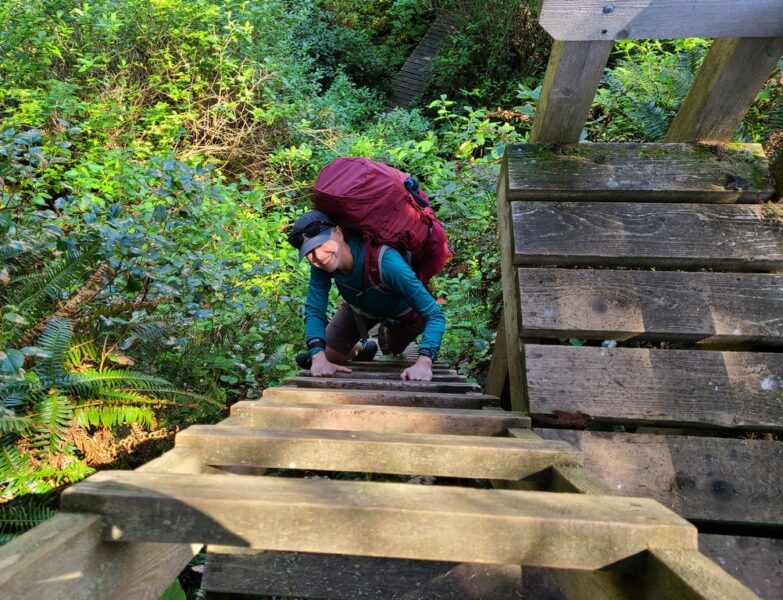Making Tracks on the West Coast Trail
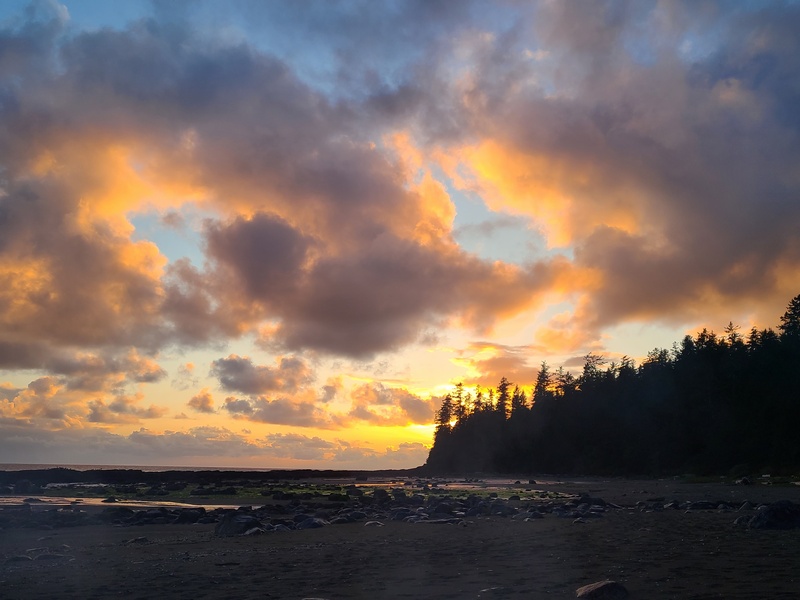
In May 2024 I hiked the West Coast Trail, for the second time (last time was about 2004), with a couple friends. The trail is a 75km journey that steals its way through forest and across beaches, between Port Renfrew and Bamfield on Vancouver Island. It passes through the traditional territory of the Pacheedaht, Ditidaht, Huu-ay-aht, and Nuu-chah-nulth peoples, who have inhabited the area for more than 4,000 years and are the keepers of the trail. Our trip took eight days and seven nights. Even though it was not enough time to digest the rich coastal world we were enveloped in, I could still feel its effect on me.
Moving along at a backpacking pace, an extra thirty pounds on my back, I became aware of the steady changes of the trail; a patch of mud, tricky roots, a straight dry section (phew!) or another ladder, bridge or cable car (there are over 100 structures on the trail). On the beach it was, soft sand, hard sand, pebbles, driftwood, flat shelves, rocks or giant boulders. Whatever we were walking through we had to adjust our step and awareness accordingly – we had to physically respond to our surroundings.
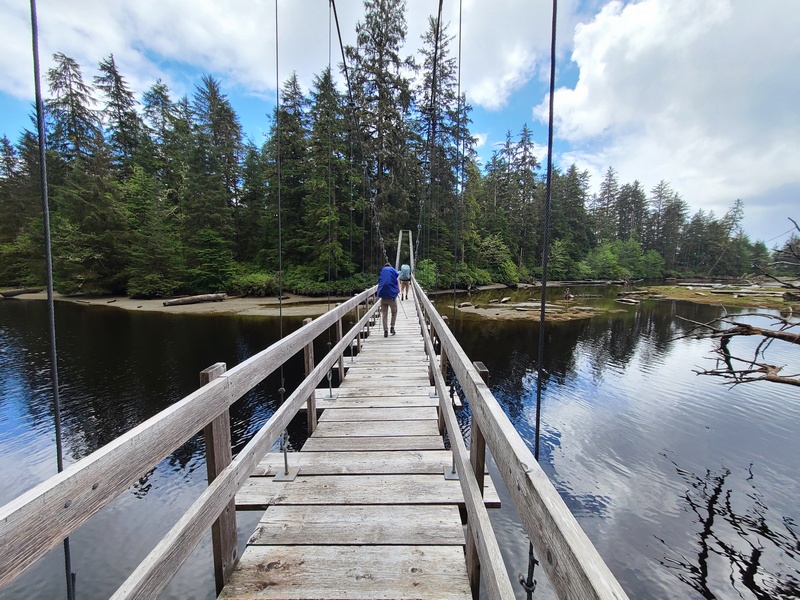
In the forest I was aware of the different vegetation that followed us along the way. In May I mostly noticed deer ferns, lily of the valley, salmon berry bushes in flower, maidenhair ferns and salal. Also there were a few old growth that had escaped the loggers saws, such as giant cedar and spruce. The haunting sound of the Varied thrush helped produce a mystical atmosphere, and we also saw quite a few robins, even on the beaches.
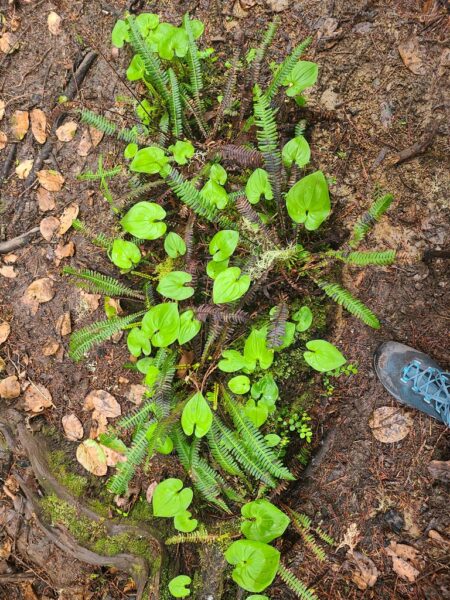
On the trail were tracks of hikers that had been in the same spot as us, maybe minutes before. It was hard to imagine that thousands of different individuals had been in our exact same location, just at different times. On the beach, we saw fresh bear and a wolf tracks, side by side (buddies?) that appeared after the last high tide. Whale spouts were a constant presence, especially at the beginning, their dark backs very close to shore. A new baby humpback had washed up on the beach ahead – maybe they were looking for it. Talk among the hikers was that the baby got hit by one of the ships going up the coast, others thought maybe a pod of orcas attacked it or maybe it was just too young for the colder temperatures. When we saw it, a couple of eagles were trying unsuccessfully to peck through its firm blubber which had the look of hard plastic.
Seal’s heads bobbed out of the water, watching us and sometimes you could see them surfing the waves. We saw otters run in and out of the ocean. One ran past campers on the beach with a crab in his mouth, about to have by far, the more deluxe dinner of us all. Otters’ footprints were four small prints in a bunch, a space, then four small prints, like it jumps rather than runs, showing what a hurry it is in.
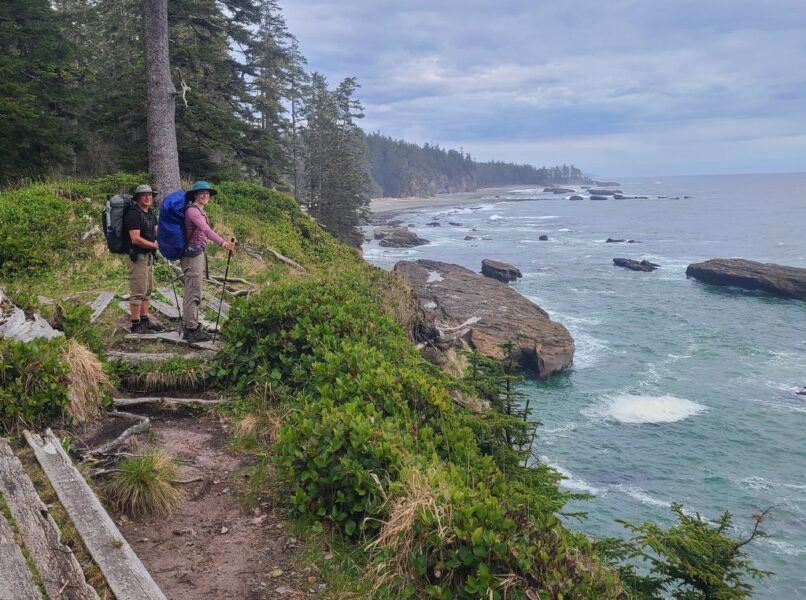
We took seven nights to complete the trail which allowed us a generous pace to get to camp and leave in the morning – but even so, with the set up and take down of tents, filtering water from a creek, or making meals, there was just enough extra time for building a fire or having a cup of tea. I found most of my thoughts were preoccupied with the efforts of the trail and camping. Every night we fell asleep to the sound of surf, sometimes very loudly pounding the beach, a constant presence.
We had to be aware of the tides which changed every six hours, including some very high tides, which meant a couple times we had to camp in the forest instead of on the beach. Our map, which we seemed to pull out every couple hours while hiking, had a tide chart on it. The last day of our hike (we hiked north to south) around Owen Point, we had to leave very early to get the low tide we needed to navigate around dangerous surge channels and the headland. We were rewarded by seeing some enchanting large caves which were soon followed by a challenging boulder field, in which were the largest mussels and barnacles I’ve ever seen.
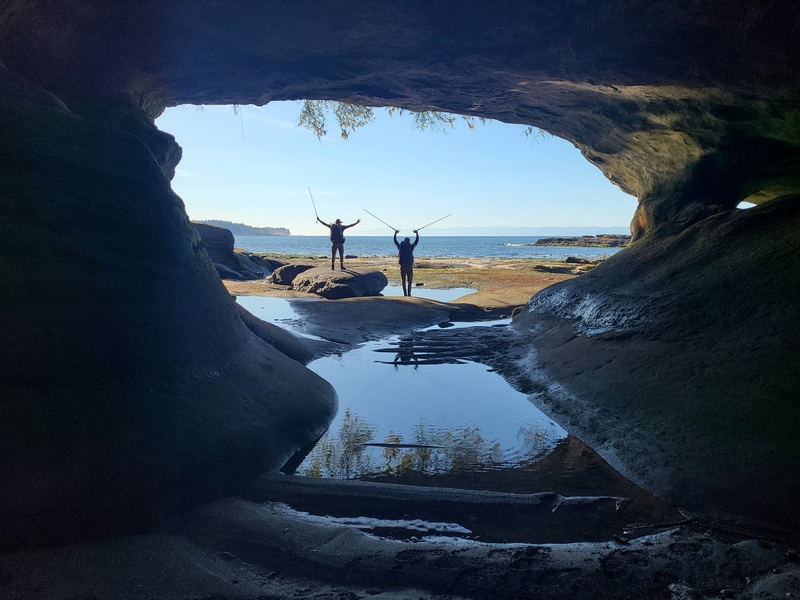
What I appreciated most about the hike was travelling at a slow speed through the landscape, for several days in a row. At home, in contrast, vehicle travel compresses our experience. Our bodies don’t get the chance to physically respond to the landscape – it is like we are just skim on top, unaffected.
I think it must be upsetting to animal’s routines, when 7000 humans descend on their beaches between May and September every year. The trail was built in 1907 to help save people lost in shipwrecks, a place that had earned the name “graveyard of the Pacific”. Now it is there to remind people about what it is like to move at a slower pace, be physically uncomfortable, but then at the end, feel a sense of accomplishment and maybe a little bit changed by the experience.
